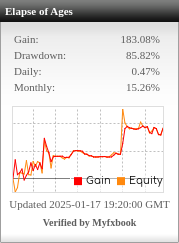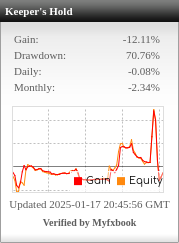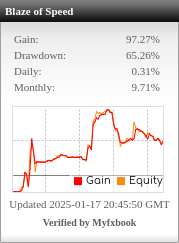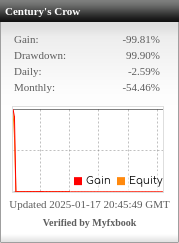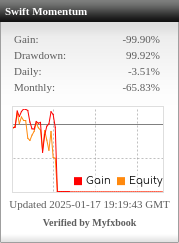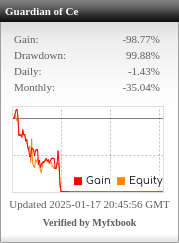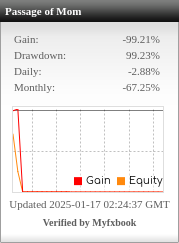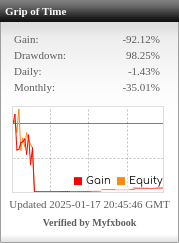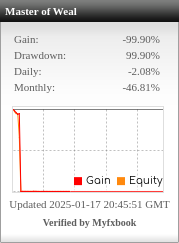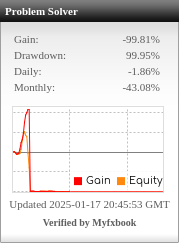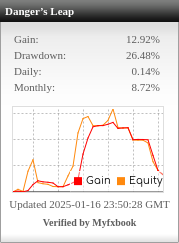Table of Contents
### **Profitability**
1. **Total Net Profit:**
– Achieving a net profit of **$9,813,093.19** from an initial deposit of $5,000 is highly impressive.
– The gross profit of **$24,848,065.28** vs. gross loss of **-$15,034,972.09** results in a **Profit Factor** of **1.65**, indicating a profitable strategy with reasonable risk-return efficiency.
2. **Expected Payoff:**
– The expected payoff of **$1180.17 per trade** suggests that, on average, each trade contributes significantly to profitability.
3. **Winning and Losing Trades:**
– Profit trades account for **44.98%** of all trades. While the win rate is below 50%, profitability is driven by larger average profit trades (**$6,643.87**) compared to average loss trades (**-$3,286.33**).
4. **Largest Trades:**
– The largest profit trade was **$224,023.80**, while the largest loss trade was **-$137,623.20**. This highlights significant variability in trade outcomes.
—
**Risk and Drawdown**
1. **Absolute Drawdown:**
– The **absolute drawdown of $4,672.38** is minimal compared to the initial deposit, reflecting robust capital protection over the test period.
2. **Maximal Drawdown:**
– A **maximum drawdown of $664,843.60 (10.27%)** in monetary terms is acceptable for a strategy generating substantial profit. However, the **relative drawdown of 97.01%** is concerning, as it indicates that the account came dangerously close to wiping out equity at some point.
3. **Trade Variability and Risk Control:**
– Consecutive losses reached **27 trades**, but the financial impact of the worst losing streak was relatively contained (**$932.51**).
– The most damaging losing series was **$210,731.40 over three trades**, suggesting that large loss trades are clustered and could pose significant equity risks.
—
**Efficiency**
1. **Trade Frequency and Duration:**
– The EA executed **8,315 trades** over the test period, averaging around **1 trade per day**. This is appropriate for a mid-frequency strategy on a 30-minute timeframe.
2. **Consistency:**
– The longest winning streak was **24 trades**, with a maximum profit of **$370,839.32**, which shows strong performance clustering.
– The average consecutive wins (3) and losses (4) suggest that the system oscillates quickly between profitable and losing phases.
—
**Key Observations**
– **High Profitability vs. High Risk:**
While the strategy is highly profitable, the **97.01% relative drawdown** reveals high risk, which could lead to margin calls or catastrophic losses if the EA encounters an extended adverse market phase.
– **Win Rate and Payoff Balance:**
A lower win rate (below 50%) is compensated by larger average profit trades. This “low-frequency, high-reward” model works well but requires strict risk controls.
– **Scalability:**
The strategy’s ability to scale may be limited by the drawdown risks and the size of its largest loss trades.
—
**Recommendations for Optimization**
1. **Risk Management Enhancements:**
– Reduce the relative drawdown by improving stop-loss mechanisms or incorporating trailing stops to limit losses during prolonged losing streaks.
– Adjust position sizing dynamically based on equity to prevent overexposure.
2. **Profitability Refinement:**
– Focus on increasing the win rate slightly by filtering out lower-probability setups. A win rate of even 50% could improve the overall strategy’s performance significantly.
3. **Backtest with Variable Spread and Slippage:**
– Given the fixed spread of 10 in this test, evaluate performance under variable spreads and slippage scenarios to ensure robustness in live markets.
4. **Monte Carlo Simulations:**
– Run simulations to test the EA’s performance under varying market conditions to assess reliability and stability.
5. **Focus on Reducing Largest Losses:**
– Review trade logic to identify and mitigate patterns leading to significant losses, such as the **-$137,623.20 trade**.
—
**Final Verdict**
The **Cycle of Life EA** demonstrates exceptional profitability but exhibits high risk. While it thrives in historical data, improvements in risk management are crucial for sustainable live performance. If implemented correctly, these changes could lead to a more consistent and resilient trading strategy.









